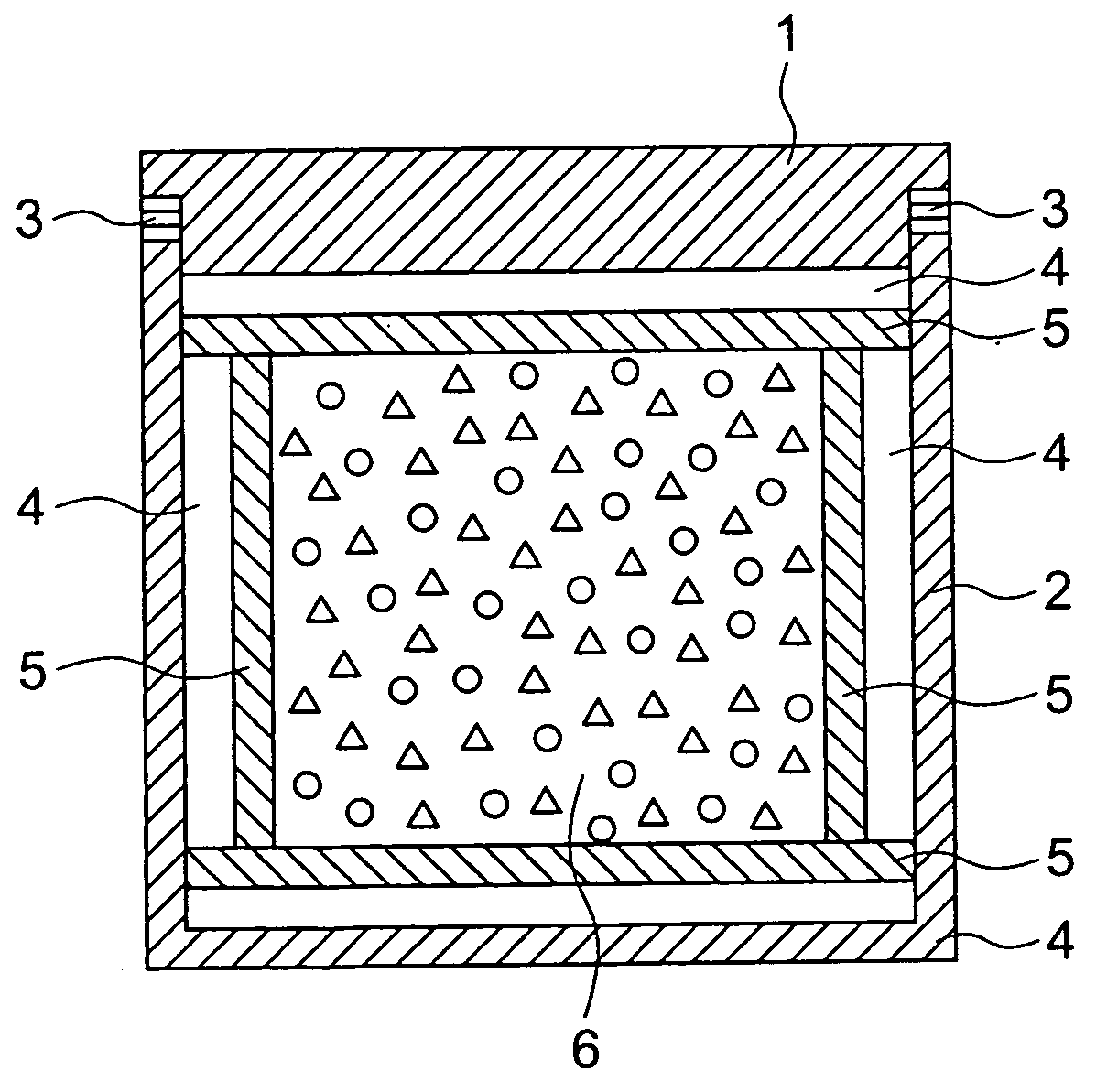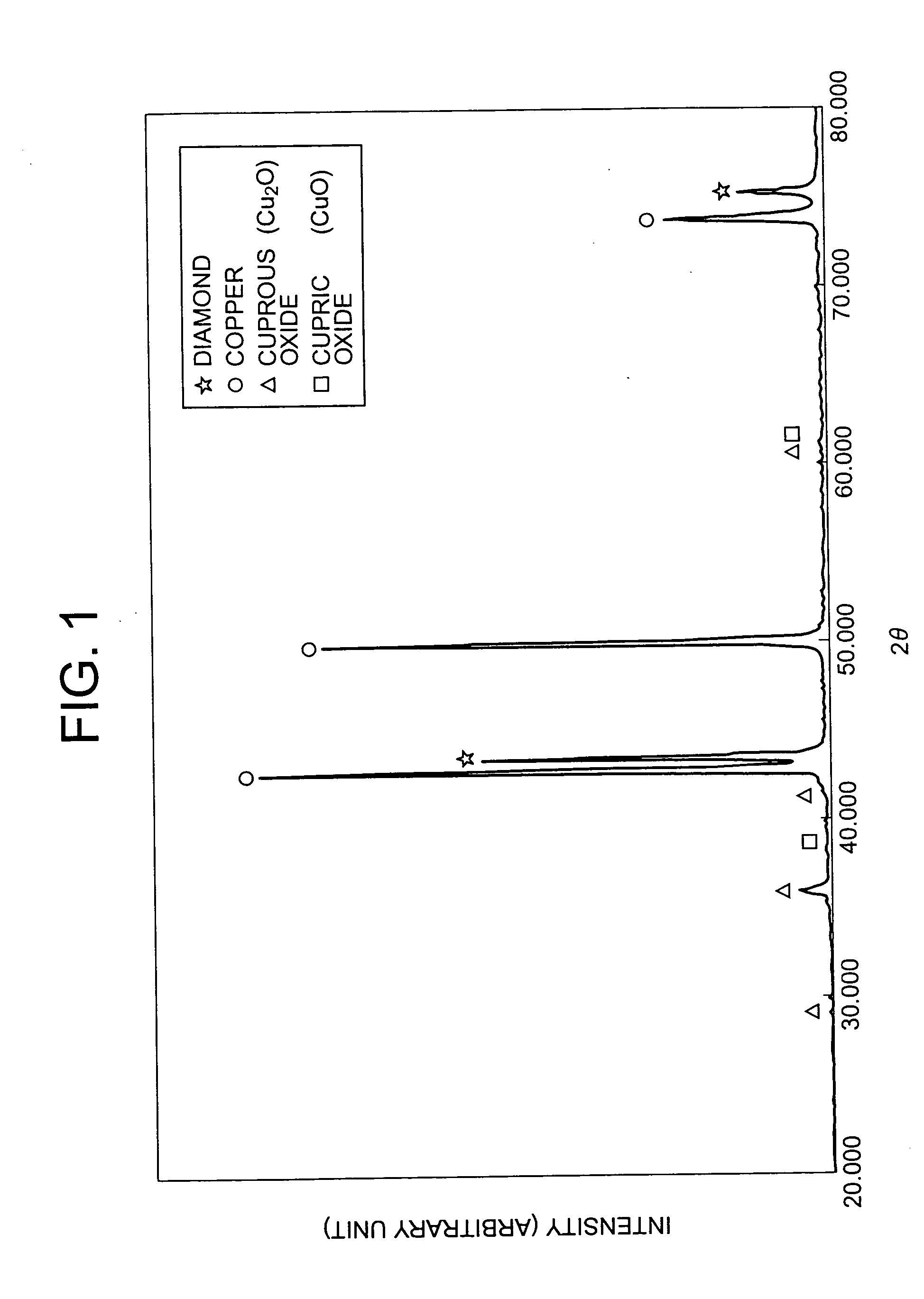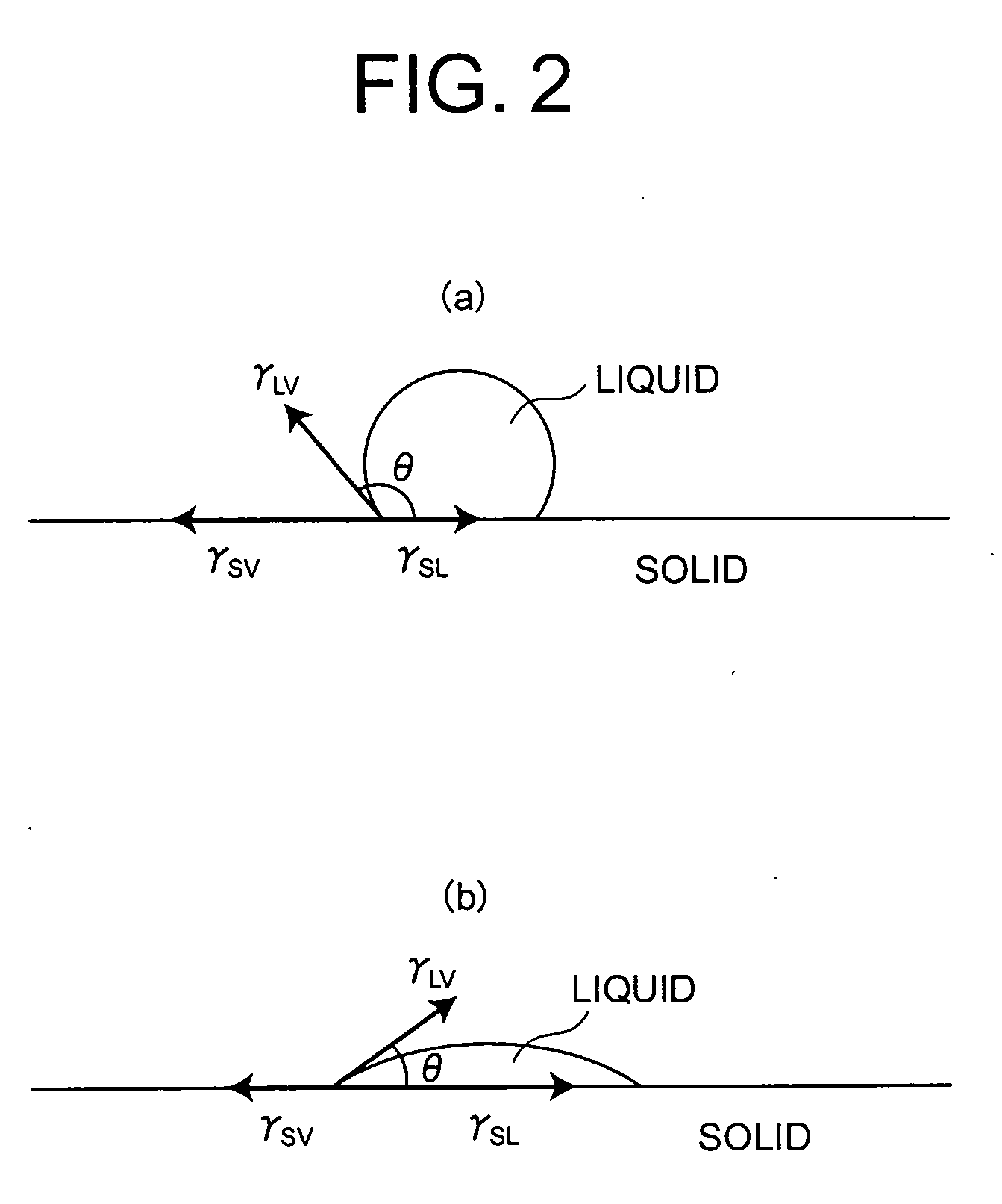Sintered diamond having high thermal conductivity and method for producing the same and heat sink employing it
a technology diamond, which is applied in the field of high thermal conductivity composite materials, can solve the problems of thermal management, thermal conductivities of these materials (250 w/mk for ain and 270 w/mk for sic), and thermal stress caused by mismatch, so as to prolong the life of the semiconductor. the effect of improving the performance of the semiconductor chip
- Summary
- Abstract
- Description
- Claims
- Application Information
AI Technical Summary
Benefits of technology
Problems solved by technology
Method used
Image
Examples
example 1
A commercially available diamond powder having a required grain diameter as shown in Table 1 and a copper powder having a grain diameter of at most 15 μm and a purity of 99.9% is mixed with a mixing ratio of Table 1, the mixed powders were charged in a container made of molybdenum, having such a construction as shown in FIG. 6, and an inner diameter of 25 mm and a depth of 5 mm with a niobium plate and titanium plate and compressed at a load of 2 t / cm2 to obtain a compressed powder body. The container charged with this compressed body was covered with a molybdenum lid through a brazing material and heated in vacuum to braze and seal the container and lid. As comparative examples, there are shown in Table 1, as Comparative Examples 1 to 16, in which diamond grains having grain diameter of less than 5 μm were charged in the same capsule, or diamond grains having grain diameter of 5 to 100 μm were charged without vacuum sealing or without titanium plate and were prepared in the simila...
example 2
A commercially available diamond powder having a required grain diameter as shown in Table 1 was charged in a container made of molybdenum, having an inner diameter of 25 mm and a depth of 5 mm and compressed at a load of 2 t / cm2 to obtain a compressed powder body of 2 mm thick. An oxygen free copper plate having a diameter of 25 mm and thickness of 0.5 mm was arranged to be in contact with the compressed body, upon which a Zr foil having a diameter of 25 mm and thickness of 0.5 mm was arranged. The container charged as described above, was covered with a molybdenum lid through a brazing material and heated in vacuum to braze and seal the container and lid. As comparative examples, there are shown in Table 2, as Comparative Examples 17 to 18, in which diamond grains were charged without vacuum sealing or without zirconium plate and were prepared in the similar step and the like.
These containers were charged in an ultra-high pressure producing apparatus belt type, maintained at a ...
example 3
The sintered compact prepared in Example 1 was worked so as to give a thickness of 0.5 mm by discharge working and then subjected to lapping at both the surface and back surface by the use of a diamond wheel of # 400. The thus lapped sintered compact was cut in a dimension of 3 mm×1 mm using a YAG laser having an output of 3 W. After the cutting work, breakages at the cutting edge and the surface roughnes of the lapped surface were measured to obtain results shown in Table 3. Similarly, a sample with a diamond grain diameter of 110 μm (Comparative Example 14) and another sample with a diamond grain diameter of 130 μm (Comparative Example 15), as comparative examples, were sintered in an analogous manner to Example 1 and then subjected to a working test, thus obtaining results shown in the same table.
TABLE 3SurfaceMaximum BreakageRoughnessQuantity at EndSample No.(Ra: μm)(μm)10.08820.07830.07640.06550.05460.05370.03280.012Comparative0.1210 Example 14Comparative0.1512 Example 15
PUM
| Property | Measurement | Unit |
|---|---|---|
| grain size distribution | aaaaa | aaaaa |
| density | aaaaa | aaaaa |
| density | aaaaa | aaaaa |
Abstract
Description
Claims
Application Information
 Login to View More
Login to View More - R&D
- Intellectual Property
- Life Sciences
- Materials
- Tech Scout
- Unparalleled Data Quality
- Higher Quality Content
- 60% Fewer Hallucinations
Browse by: Latest US Patents, China's latest patents, Technical Efficacy Thesaurus, Application Domain, Technology Topic, Popular Technical Reports.
© 2025 PatSnap. All rights reserved.Legal|Privacy policy|Modern Slavery Act Transparency Statement|Sitemap|About US| Contact US: help@patsnap.com



